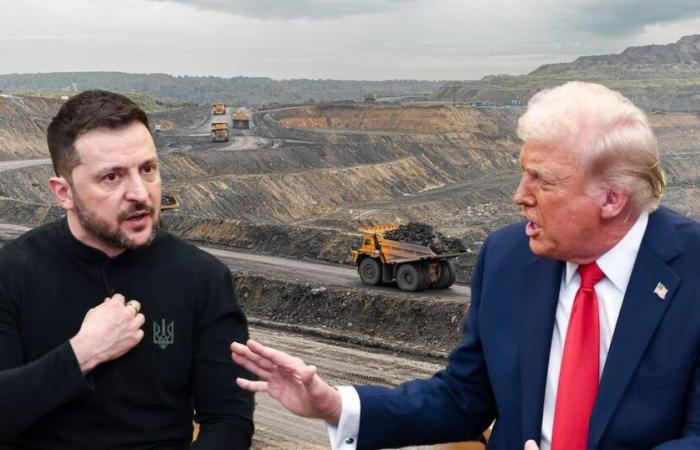
The United States and Ukraine finally signed an agreement that will allow the Donald Trump Government benefit from the exploitation of rare minerals in Ukrainian lands, in exchange for contributing to the reconstruction of the European country, devastated by The war he maintains with Russia For three years.
After the failed negotiations between Trump and Zelenski, both countries finally managed to reach an understanding for the supply of critical minerals, considered an increasingly greater concern for the United States regarding national security.
And although, this country counts are its own rare earths, also It depends largely on imports For most of these materials.
What are the famous rare minerals that Trump sizes so much and why the United States urgently seeks to make this “treasure” of resources? This is explained by two experts.
What are the rare minerals that interest the US so much?
“Every time you use your phone, open your computer or listen to your favorite music on Airpods, you are consuming essential minerals. ”, Point out Yuanzhi Tang, biogeochemistry professor at the Institute of Technology of Georgia and Scott McWhorter, distinguished member of the Institute of Strategic Energy.
These materials, they explain, are the tiny basic components that drive modern life. From lithium, cobalt, nickel and The graphite In batteries until The Gallic In telecommunications systems that allow constant connectivity, critical minerals act as the essential vitamins of today’s technology.
The growing world demand, the high dependence on imports and growing geopolitical tensions have made the supply of these minerals a concern and one of the most urgent challenges of our time. This raises the question: Can the United States extract and process rare minerals in your country?
In an article for the medium The ConversationMcWhorter explains that rare earth elements do not usually occur in easy access and economically viable mineral forms. Therefore, identifying resources with a sufficiently high concentration and volume is crucial to allow its economic production.
What rare minerals are in the United States?
At present, the United States only has Two places of national extraction of rare earths: Georgia y Californiabut because the concentrates produced are sent outside the State and then outside to refine them, it ends up importing most of these materials.
-In 2024, The United States imported 80 percent of the rare earths used100 percent of the gallium and the natural graphite, and between 48 and 76 percent of lithium, nickel and cobalt, to name just a few.
In Southeast Georgia, rare earths are produced as a byproduct of the extraction of heavy mineral sand. It also has rich mineral sand deposits in Titanium and Circoniumboth used in aerospace, energy and medical applications.
Meanwhile, in Mountain Pass, California, hard rock mining extracts a rare earth carbonate mineral basstnasite.

However, much of the material is sent abroad for its refinementwhich means that the entire supply chain, from mining to the final use of products, extends through the continents.
The above, in part, is due to the fact that processing is easier to perform in other countries and not in the United States, where the environmental impactsthe Energy demand and the regulatory restrictions.
The problem of rare earth production and high costs
The efforts for the exploration of critical minerals are increased rapidly throughout the United States, by the hand of the geological service and the initiative of mapping of the land, known as Earth MRI, which serves to identify potential sources within the country.
Some areas seem promising like Wyoming y Montanabut the problem is that it is not the same to identify a resource than to produce it.
“Traditional mining can take one or two decades from exploration to production, and up to 29 years in the United States, the second longest term in the world.” McWhorter says.
The specialist mentions that although, this period could change with the current administration, companies could still face important uncertainties related to obtaining permits, infrastructure development, the opposition of the community and the management of environmental impacts.





